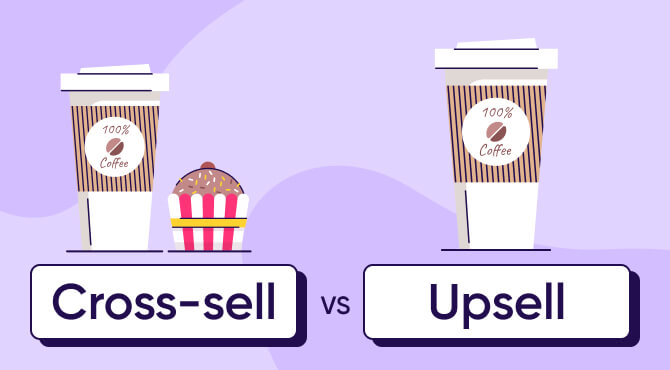
HVOD (Hybrid video on demand)
Hybrid video on demand (HVOD) is a revenue model for video streaming platforms that combines two or more income streams, like subscriptions (SVOD), advertising (AVOD), and transactions (TVOD).
And in the blink of an eye, the era of low-cost streaming is over. Having access to every Marvel, Pixar, Disney, and Star Wars movie for the price of a single movie ticket now sounds like a fantasy. Because while the race for subscribers initially drove prices down, streaming platforms have realized they can’t keep running on empty.

Is video on demand in demand?
Streaming accounts for 38.1% of total TV usage in 2023, surpassing broadcast and cable. The result? The birth of a $159.90 billion industry.
The extremely competitive prices that came out of the ‘streaming wars’ made subscribing a no-brainer. Today, retaining subscribers while remaining profitable is the challenge streaming services need to tackle if they want to grow sustainably.
Striking that balance means offering high-quality and unique shows at a price point that subscribers can justify.
But finding that perfect price point is no easy task. Recently, we’ve seen streaming services raise prices and crack down on account sharing. But, as the economic downturn takes its toll, that’s led to consumers canceling their traditional subscription video on demand (SVOD) subscriptions, turning to free, ad-supported services instead.
The solution, it seems, is a hybrid pricing model, where platforms offer varying pricing packages with different features and ad frequency.
What is HVOD?
Hybrid video on demand, or HVOD for short, is a monetization model used by over-the-top (OTT) streaming platforms that combines two or more monetization strategies, including ad-supported tiers.

Like hybrid cars, which allow drivers to choose between electricity and gas, hybrid video on demand allows price-sensitive consumers to watch the content they enjoy at the price points that work for them.
What are the benefits of HVOD?
A hybrid monetization model allows streaming services to deliver a user experience that works for everyone. That means they can reach a wider audience, and no one has to miss out on their favorite shows.
Here are a few more ways that HVOD benefits advertisers, publishers (the platforms themselves), and users.
Responding to consumer trends
Hybrid monetization models allow OTT platforms to flexibly package features and pricing to suit the economic climate and align with consumer trends. After all, an ad-free subscription service with a premium price tag may be the first “luxury” to go when budgets are tight.
By having a range of price points, streaming services can also provide value in other ways, including 4K resolution, exclusive pre-releases, and gaming content.
Personalized ads
Advertising can be a lucrative alternative to subscription content – just look at YouTube. And the more relevant and personalized the ads, the better the response will be.
Increasingly, streaming services are offering a blend of ad-supported and ad-free subscription tiers, with the likes of Hulu, Netflix, Disney+, and Apple TV+ all jumping on the bandwagon. This approach means the platforms have the data they need to deliver highly personalized messaging through programmatic advertising. That translates into more engaged users, and more revenue for advertisers and publishers.

Lower churn and higher retention rates
The hybrid approach means that, when the streaming service inevitably raises its prices, it won’t alienate the entire customer base. Providing a lower-cost alternative helps retain a loyal user base while minimizing churn.
How does HVOD differ from other OTT monetization models?
There are lots of acronyms to keep up with in the world of OTT, especially when it comes to monetization models. Since HVOD is a combination of two or more of them, here’s a quick refresher on what each one offers.
Subscription video on demand (SVOD)
With SVOD, subscribers pay a regular subscription fee to access the entire library of video content. This is the simplest revenue model, as it relies on predictable subscription growth rather than ad revenue.
Advertising-based video on demand (AVOD)
AVOD lets viewers access the content library for free in exchange for watching ads – the model you’ll recognize from YouTube. This is by far the most accessible revenue model with the largest audiences.
Transactional video on demand (TVOD)
TVOD asks viewers to pay a one-time fee to watch an individual piece of content, like a newly released movie or a pay-per-view sports event. Typically, you can buy the content for unlimited viewing, or rent it for a limited time period or set number of views.
Free ad-supported television (FAST)
FAST is the digitized version of cable television, where viewers can watch pre-programmed content for free, powered by advertising. Examples include Pluto TV and Peacock.
Premium video on demand (PVOD)
With PVOD, viewers can pay for a pre-release or an exclusive piece of content for a fee on top of their existing subscription fee.
Broadcaster video on demand (BVOD)
BVOD is an on-demand streaming service that is tied to a traditional broadcaster, where viewers can watch their television programming online. BBC iPlayer is a well-known example.
Virtual multichannel video programming distributor (vMVPD)
Similar to bundled sports packages offered by traditional cable companies, vMVPD offers subscribers a group of bundled digital channels for a flat fee that would typically be less than paying for each channel individually.
How to generate more revenue with HVOD
As well as improving engagement and retention, HVOD gives you multiple revenue sources. Here’s how to get the most out of them.
Upsell and cross-sell
Offering viewers a low barrier to entry opens up opportunities for OTT services to upsell and cross-sell their features and services. Free trials or free ad-supported tiers let potential subscribers watch shows that they’re interested in for free, before committing to a fully ad-free, binge-worthy experience.

Diversify your revenue sources
With HVOD, OTT services can test and experiment more freely than SVOD services, where customers may be hyper-sensitive to the flat fee. Enabling programmatic advertising allows more brands to connect with your premium audiences, contributing to increased and scalable revenue. On top of this, HVOD also opens the door to strategic content partnerships and affiliate advertising as alternative revenue streams.
Make data-driven decisions
HVOD enables platforms to gather extensive user behavior data, both with and without ads. Most importantly, this data can highlight price sensitivity.
This means OTT services can pinpoint features and content that drive the most value, allowing them to confidently adjust pricing or package up attractive bundles. Just don’t overdo it, as too many price changes could turn viewers off.
Key takeaways
- Hybrid video on demand (HVOD) is a revenue model for OTT subscription services that combines two or more income streams, like subscriptions (SVOD), advertising (AVOD), and transactions (TVOD).
- In today’s competitive streaming market, more platforms are adopting a hybrid model to broaden their audience and retain users.
- Offering a range of price points also enables streamers to respond to consumer trends and personalize ads using programmatic technology.
- HVOD opens up multiple revenue streams, as well as opportunities for cross-selling and upselling. It also provides OTT platforms with valuable behavioral data to shape and scale their offering profitably.



